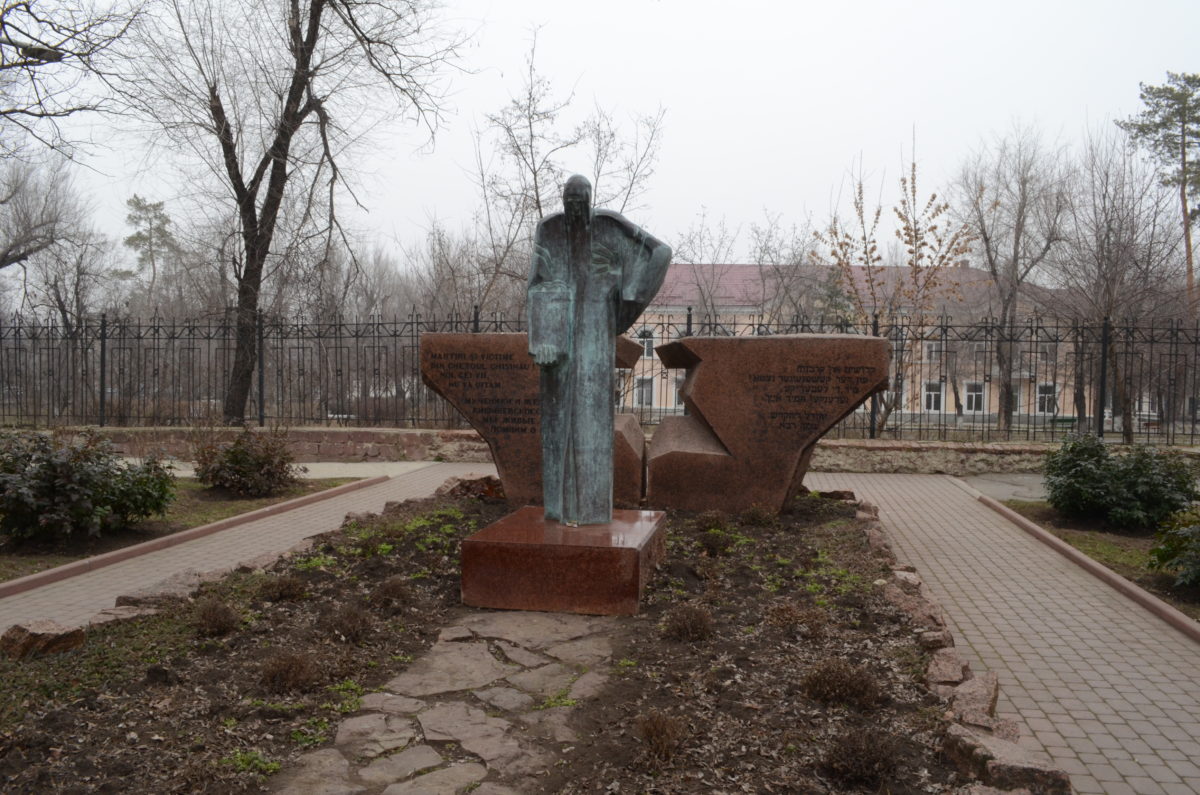Between the multi-lane Bulevardul Grigore Vieru and the Strada Puskin, you will find the monument to the victims of the Chişinău Jewish Ghetto on the Strada Ierusalim.
The entrance nearby was the main entrance to the former ghetto, which was built in July 1941 in the lower part of the city after German and Romanian units took control of Chişinău. Over 11,000 Jews – men, women and children – were rapidly forced into the ghetto. Today, an information board shows the dimensions of the ghetto.
The exact number of Jews remaining in the city at the time is not known. Some were deported by the Soviet government before the war, others were evacuated or drafted into the Red Army. However, thousands could not or did not want to leave the city. Ida Voliovich was one of those who managed to escape just in time:
Early in the morning I heard explosions […]. Mama and I grabbed our documents and left the house. Mama only made me put on my coat that my uncle had sent from Belgium. She also had her coat on. This was all we had. On our way we came by aunt Tsypa, trying to convince her to join us. She refused, saying that […] they were fed up with the Soviet power and were going to wait for the Romanians. My brother Kelman was in the army. His wife Dora and her child also stayed. She and my nephew Mikhail […] perished in the Chişinău ghetto in 1941. My aunt Tsypa and her husband also died in the ghetto.
The area of the ghetto was guarded and was surrounded by a wooden fence with barbed wire. From the beginning, the ghetto was intended as a temporary solution to concentrate the city’s Jews. From here, they were supposed to be deported to Transnistrian camps. The conditions in the ghetto were devastating and inhumane. Illness and extreme hunger were just as common as rape and other forms of excessive violence. Several hundred inmates were executed in August[1941].
In her interview with Centropa, Riva Belfor described the death of her grandfather and his wife:
Reizl was grandfather Ihils third wife. She was his last wife. She was a comfort to my grandfather during the last stage of his life and was doomed like he was. In 1941 the Germans came to Bessarabia. Ihil didn’t want to get evacuated, so he died with his wife in the Chişinău ghetto. It was a horrible death. Father told me that Grandfather was harnessed in the cart with a huge barrel with water and made to run until he fell dead, while the guards were mocking him. Reizl was shot shortly afterwards.
Mass deportations to Transnistria began in early October 1941. Polina Leibovich was one of the many Jews who were deported:
Before Bessarabia was annexed to the USSR, Romanian troops trained near Chişinău, and some high-rank Romanian officer stayed in our apartment. When the German and Romanian troops came to Chişinău in 1941, he came to see us and left a sign on the door that there was a Romanian officer staying there. It helped us to escape from searches for some time. However, in the fall we were sent to the ghetto in Chişinău, and in January 1942 all inmates of the ghetto were taken across the Dnestr to Odessa region. My father was very ill, and I managed to get a place in a train car for him. This was the last time I saw him. My father was killed near the village of Yasinovo in the Odessa region. My mother was with me. She couldn’t walk and we dragged her holding her by her arms. On the way they began to kill exhausted people. I survived by some miracle […] and I escaped.
The deportations were, by and large, completed by the end of October, with only a few Jews remaining in the city. In late 1942 there were practically no Jews left in Chişinău. Only a few survived the camps in Transnistria.
The monument to the victims of the Chişinău ghetto was erected in 1993. It consists of two red granite blocks, the recesses of which form a Star of David. A bronze figure stands in front of the stone elements. A text in Hebrew, Romanian and Russian says, “Martyr and victim of the Chişinău ghetto! We, the living, remember you!”
